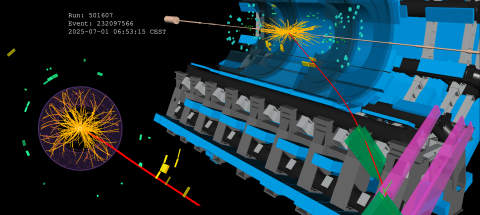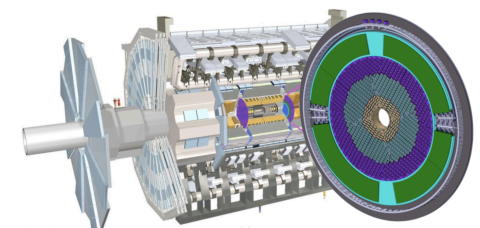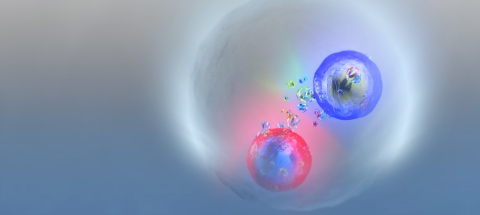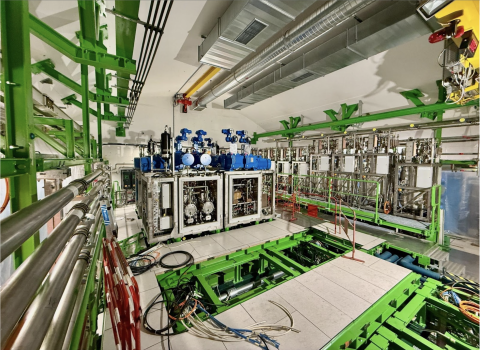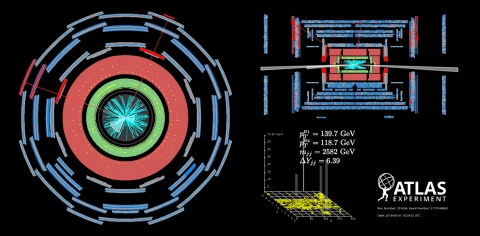ATLAS
Light ions at the LHC: first results from oxygen–oxygen and neon–neon collisions
This summer, the Large Hadron Collider (LHC) delivered its first-ever collisions between light ions, opening a new chapter in the study of nuclear structure and the quark–gluon plasma (QGP) – the extreme state of matter that existed in the first…
Read moreATLAS explores the quark–gluon plasma with light-ion collisions
In July 2025, ATLAS recorded the first-ever collisions of light ions at the LHC — oxygen–oxygen (O–O) and neon–neon (Ne–Ne) — marking a new phase in the study of strongly interacting matter. These short, intense runs provided a unique opportunity to…
Read moreATLAS explores the quark–gluon plasma with light-ion collisions
In July 2025, ATLAS recorded the first-ever collisions of light ions at the LHC — oxygen–oxygen (O–O) and neon–neon (Ne–Ne) — marking a new phase in the study of strongly interacting matter. These short, intense runs provided a unique opportunity to…
Read moreThe ATLAS High Granularity Timing Detector
Introduction Given the challenging conditions posed by the HL-LHC, ATLAS is currently in the process of constructing a novel precision-timing silicon detector, the High-Granularity Timing Detector (HGTD), which provides a time resolution of 30 to 50…
Read moreBound state, found state - ATLAS ties the knot on top quark pair production at threshold
Physics at the LHC often advances by pushing into regimes once thought unreachable. One such frontier is the precise study of top-anti-top quark pairs (tt̄) near the production threshold, where subtle quantum effects may leave their imprint. A few…
Read moreNext-Generation CO₂ Cooling Systems Powering the Future of ATLAS and CMS
Four CO2 cooling plants and accumulators in the service cavern of CMS in May 2025. (Photo by Jérôme Daguin) During recent shutdown periods, CERN engineers and technicians — in collaboration with the ATLAS and CMS teams — began installing the…
Read moreThe ATLAS Inner Tracker Integration at CERN
Introduction The ATLAS ITk (Inner TracKer) is a new all-silicon tracker that will replace the existing ATLAS Inner Detector (ID) to meet the requirements imposed by the high-radiation and high-hit occupancy environments of the HL-LHC (High-…
Read moreATLAS Approaching a Breakthrough in Diboson Polarization with Run-3 Data
The study of the polarisation of vector boson scattering (VBS) processes provides a unique test of the Higgs mechanism’s role in taming high-energy electroweak interactions, making it indispensable for fundamental physics for the last decades. As…
Read moreTracing the Path to Precision: The Historical Evolution of Electroweak Physics at the LHC
The unification of the electromagnetic and weak-nuclear forces into an electroweak theory was one of the major breakthroughs of 20th century particle physics. In the 1960s, Steven Weinberg, Sheldon Glashow, and Abdus Salam proposed that these two…
Read moreATLAS hones in on Higgs-Boson Couplings to Heavy Flavour Quarks
Candidate event for the ZH → μμ cc process, where a Z boson and a Higgs boson decay to two muons (red tracks) and two charm-tagged jets (blue cones). (Image: ATLAS collaboration) In the summer of 2024, the ATLAS collaboration released two new…
Read more

